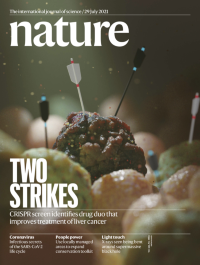 |
You Zhou, Jiho Sung, Elise Brutschea, Ilya Esterlis, Yao Wang, Giovanni Scuri, Ryan J. Gelly, Hoseok Heo, Takashi Taniguchi, Kenji Watanabe, Gergely Zaránd, Mikhail D. Lukin, Philip Kim, Eugene Demler & Hongkun Park
Bilayer Wigner crystals in a transition metal dichalcogenide heterostructureNature (2021) Abstract: One of the first theoretically predicted manifestations of strong interactions in many-electron systems was the Wigner crystal, in which electrons crystallize into a regular lattice. The crystal can melt via either thermal or quantum fluctuations. Quantum melting of the Wigner crystal is predicted to produce exotic intermediate phases and quantum magnetism because of the intricate interplay of Coulomb interactions and kinetic energy. However, studying two-dimensional Wigner crystals in the quantum regime has often required a strong magnetic field or a moiré superlattice potential, thus limiting access to the full phase diagram of the interacting electron liquid. Here we report the observation of bilayer Wigner crystals without magnetic fields or moiré potentials in an atomically thin transition metal dichalcogenide heterostructure, which consists of two MoSe2 monolayers separated by hexagonal boron nitride. Read more |
|
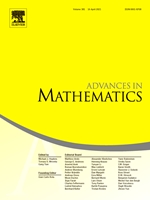 |
Szilárd Szabó
Perversity equals weight for Painlevé spacesAdvances in Mathematics (2021) Abstract: We provide further evidence to the conjecture of de Cataldo, Hausel and Migliorini, by checking it in the Painlevé cases. Namely, we compare the perverse Leray filtration induced by the Hitchin map on the cohomology spaces of the Dolbeault moduli space and the weight filtration on the cohomology spaces of the irregular character variety corresponding to each of the Painlevé systems. We find that the two filtrations agree. Read more |
|
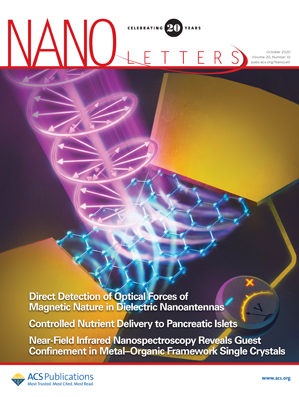 |
David I. Indolese, Paritosh Karnatak, Artem Kononov, Raphaëlle Delagrange, Roy Haller, Lujun Wang, Péter Makk, Kenji Watanabe, Takashi Taniguchi, and Christian Schönenberger
Compact SQUID Realized in a Double-Layer Graphene HeterostructureNano Letters (2020) Abstract: 2D systems that host 1D helical states are advantageous from the perspective of scalable topological quantum computation when coupled to a superconductor. Graphene is particularly promising for its high electronic quality, its versatility in van der Waals heterostructures, and its electron- and hole-like degenerate 0th Landau level. Read more |
|
 |
Tímea Nóra Török, Miklós Csontos, Péter Makk and András Halbritter
Breaking the Quantum PIN Code of Atomic SynapsesNano Letters (2020) Abstract: Atomic synapses represent a special class of memristors whose operation relies on the formation of metallic nanofilaments bridging two electrodes across an insulator. Due to the magnifying effect of this narrowest cross section on the device conductance, a nanometer-scale displacement of a few atoms grants access to various resistive states at ultimately low energy costs, satisfying the fundamental requirements of neuromorphic computing hardware. Read more |
|
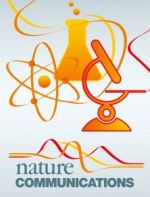 |
Balázs Dóra, Markus Heyl & Roderich Moessner:
The Kibble-Zurek mechanism at exceptional pointsNature Communication (2019) Abstract: Exceptional points (EPs) are ubiquitous in non-Hermitian systems, and represent the complex counterpart of critical points. By driving a system through a critical point at finite rate induces defects, described by the Kibble-Zurek mechanism, which finds applications in diverse fields of physics. Here we generalize this to a ramp across an EP. Read more |
|
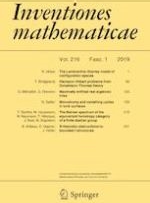 |
B. Bárány, M. Hochman and A. Rapaport:
Hausdorff dimension of planar self-affine sets and measuresInventiones Mathematicae (2019) |
|
 |
Racsmány, M., Demeter, G., & Szőllősi, Á.:
Successful list-method directed forgetting without retroactive interference of post-instruction learning
Memory (2019) Abstract: The focus of the study is the role of interference in list-method directed forgetting. More specifically, our question was whether retroactive interference of the to-be-remembered information is a necessary prerequisite for the directed forgetting effect. In Experiment 1 we used a directed forgetting procedure with one learning list without the interference of any tobe-remembered information. Read more |
|
 |
Pin-Jui Hsu, Levente Rózsa, Aurore Finco, Lorenz Schmidt, Krisztián Palotás, Elena Vedmedenko, László Udvardi, László Szunyogh, André Kubetzka, Kirsten von Bergmann & Roland Wiesendanger:
Inducing skyrmions in ultrathin Fe films by hydrogen exposureNature Communication (2018) Abstract: Magnetic skyrmions are localized nanometer-sized spin configurations with particle-like properties, which are envisioned to be used as bits in next-generation information technology. An essential step toward future skyrmion-based applications is to engineer key magnetic parameters for developing and stabilizing individual magnetic skyrmions. Read more |
|
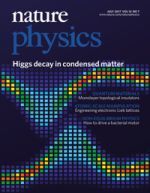 |
Márton Kormos, Mario Collura, Gábor Takács and Pasquale Calabrese
Real-time confinement following a quantum quench to a non-integrable modelNature Physics (2017) Abstract: Quarks cannot be observed as free particles in nature because they are confined into baryons and mesons, as a result of the fact that the strong interaction between them increases with their separation. However, it is less known that this phenomenon also occurs in condensed matter and statistical physics as experimentally proved in several quasi-1D compounds. Read more |
|
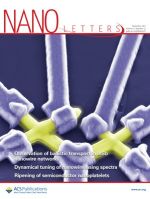 |
László Pósa, Maria El Abbassi, Péter Makk, Botond Sánta, Cornelia Nef, Miklós Csontos, Michel Calame, and András Halbritter Multiple Physical Time Scales and Dead Time Rule in Few-Nanometers Sized Graphene–SiOx-Graphene Memristors
Nano Letters (2017) Abstract: The resistive switching behavior in SiOx-based phase change memory devices confined by few nanometer wide graphene nanogaps is investigated. Our experiments and analysis reveal that the switching dynamics is not only determined by the commonly observed bias voltage dependent set and reset times. Read more |
|
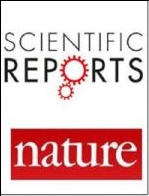 |
Lénárd Szolnoki, Annamária Kiss, Balázs Dóra, Ferenc Simon Spin-relaxation time in materials with broken inversion symmetry and large spin-orbit coupling
Scientific Reports (2017) Abstract: We study the spin-relaxation time in materials where a large spin-orbit coupling (SOC) is present which breaks the spatial inversion symmetry. Such a spin-orbit coupling is realized in zincblende structures and heterostructures with a transversal electric field and the spin relaxation is usually described by the so-called D’yakonov-Perel’ (DP) mechanism. Read more |
|
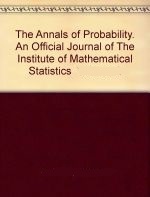 |
Balázs Ráth and Daniel Valesin: Percolation on the stationary distributions of the voter model |
|
 |
Ádám Butykai, Sándor Bordács, István Kézsmárki, Vladimir Tsurkan, Alois Loidl, Jonathan Döring, Erik Neuber, Peter Milde, Susanne C. Kehr & Lukas M. Eng: Characteristics of ferroelectric-ferroelastic domains in Néel-type skyrmion host GaV4S8
Scientific Reports (2017) Abstract: GaV4S8 is a multiferroic semiconductor hosting Néel-type magnetic skyrmions dressed with electric polarization. At Ts = 42 K, the compound undergoes a structural phase transition of weakly first-order, from a non-centrosymmetric cubic phase at high temperatures to a polar rhombohedral structure at low temperatures. Read more |
|
 |
S. Bordács, A.Butykai, B. G. Szigeti, J. S. White, R. Cubitt, A. O. Leonov, S. Widmann, D. Ehlers, H.-A. Krug von Nidda, V. Tsurkan, A. Loidl & I. I. Kézsmárki: Equilibrium Skyrmion Lattice Ground State in a Polar Easy-plane MagnetScientific Reports (2017) Abstract: The skyrmion lattice state (SkL), a crystal built of mesoscopic spin vortices, gains its stability via thermal fluctuations in all bulk skyrmion host materials known to date. Therefore, its existence is limited to a narrow temperature region below the paramagnetic state. This stability range can drastically increase in systems with restricted geometries, such as thin films, interfaces and nanowires. Thermal quenching can also promote the SkL as a metastable state over extended temperature ranges. Read more |
|
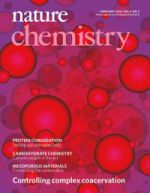 |
Wende Xiao, Karl-Heinz Ernst, Krisztián Palotás, Yuyang Zhang, Emilie Bruyer, Lingqing Peng, Thomas Greber, Werner A. Hofer, Lawrence T. Scott & Roman Fasel
Microscopic origin of chiral shape induction in achiral crystalsNature Chemistry (2016) Abstract: In biomineralization, inorganic materials are formed with remarkable control of the shape and morphology. Chirality, as present in the biomolecular world, is therefore also common for biominerals. Biomacromolecules, like proteins and polysaccharides, are in direct contact with the mineral phase and act as modifiers during nucleation and crystal growth. Read more |
|
 |
Agnes Gubicza, Dávid Zs. Manrique, László Pósa, Colin J. Lambert, György Mihály, Miklós Csontos & András Halbritter: Asymmetry-induced resistive switching in Ag-Ag2S-Ag memristors enabling a simplified atomic-scale memory design
Scientific Reports (2016) Abstract: Prevailing models of resistive switching arising from electrochemical formation of conducting filaments across solid state ionic conductors commonly attribute the observed polarity of the voltage-biased switching to the sequence of the active and inert electrodes confining the resistive switching memory cell. Read more |
|
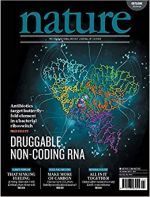 |
A. J. Keller, L. Peeters, C. P. Moca, I. Weymann, D. Mahalu, V. Umansky, G. Zaránd & D. Goldhaber-Gordon
Universal Fermi liquid crossover and quantum criticality in a mesoscopic system
Nature (2015) Abstract: Quantum critical systems derive their finite-temperature properties from the influence of a zero-temperature quantum phase transition1. The paradigm is essential for understanding unconventional high-Tc superconductors and the non-Fermi liquid properties of heavy fermion compounds. Read more |
|
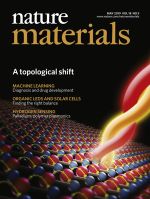 |
I. Kézsmárki, S. Bordács, P. Milde, E. Neuber, L. M. Eng, J. S. White, H. M. Rønnow, C. D. Dewhurst, M. Mochizuki, K. Yanai, H. Nakamura, D. Ehlers, V. Tsurkan & A. Loidl Néel-type skyrmion lattice with confined orientation in the polar magnetic semiconductor GaV4S8
Nature Materials (2015) Abstract: Following the early prediction of the skyrmion lattice (SkL)—a periodic array of spin vortices—it has been observed recently in various magnetic crystals mostly with chiral structure. Although non-chiral but polar crystals with Cnv symmetry were identified as ideal SkL hosts in pioneering theoretical studies, this archetype of SkL has remained experimentally unexplored. Read more |
|
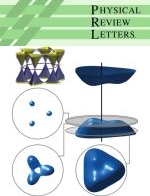 |
B. Pozsgay, M. Mestyán, M. A. Werner, M. Kormos, G. Zaránd, and G. Takács
Correlations after Quantum Quenches in the XXZ Spin Chain: Failure of the Generalized Gibbs Ensemble
Physical Review Letters (2014) Abstract: We study the nonequilibrium time evolution of the spin-1/2 anisotropic Heisenberg (XXZ) spin chain, with a choice of dimer product and Néel states as initial states. We investigate numerically various short-ranged spin correlators in the long-time limit and find that they deviate significantly from predictions based on the generalized Gibbs ensemble (GGE) hypotheses. Read more |
|



